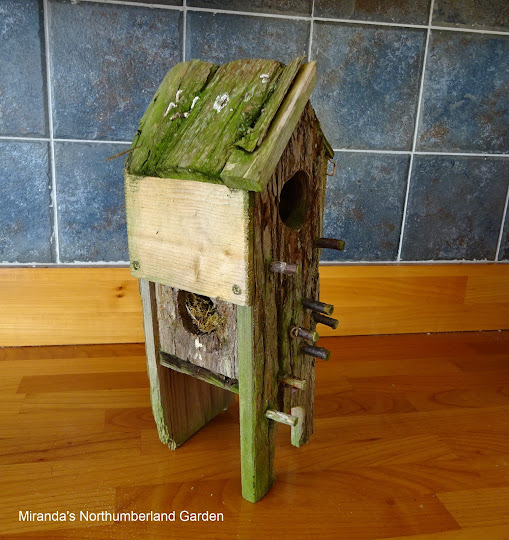Sometimes wildlife does things we didn’t think it would do.
Take birds and nest boxes for example. The conventional bird box is one that is square or rectangular, made of wood and secured somewhere where predators cannot get. But would a bird be prepared to nest in something not so conventional.
You see I discovered something last summer year which surprised me and which prompted me to ask this question and then to carry out an experiment.
In our mixed hedge, a small bird had made a nest and successfully reared some young in a small hamster house I had left in there earlier in the year. This made me wonder what strange and quirky things would birds be prepared to make their home in.
This hedge runs between our orchard and the field next door.
I'd better start at the beginning ...............
My daughter was sorting out all the bits and pieces she had accumulated over the years for her pet guinea pigs. In amongst all the spare water bottles, food bowls and hay dispensers she found a two-storey wooden hamster house. She was going to throw it out but I stopped her and asked whether I could have it for a bird box.
After scrubbing it with disinfectant and letting it fully dry out. I used some spare wood to enclose two sides of the upper storey and which made it a two compartment nest box. I then wired it into our hedge (the one between us and the field next door), but as it was May I was only expecting it to be used a roosting box.
Then one day in about July I was walking past the same part of hedge and was quite surprised to see some beaks and fluffy heads sticking out of the hamster box. I am not quite sure what birds they were but eventually they fledged. This gave me the idea to experiment on what type of containers birds would be prepared to nest in.
I put together a variety of nest boxes to see which one would be favoured most.
Here are the four nest boxes.
On the far right is the original hamster house which my daughter nearly threw out. In the picture below you can still the remnants of last year’s nesting material.
Second from the right is a hamster house bought online for a few pounds. You can see that I gave it a new floor using off-cuts of wood.
The two rectangular boxes are not very expertly or carefully made; my carpentry skills were learnt doing CSE woodwork at school in the late 1970s
The nest box with the light yellow roof is crudely made out of old skirting board and held together with large panel pins, T very kindly cut the access hole and the landing stick is a section of used firework rocket stick.

The largest box is made out of off-cuts of tall skirting board (you can see the profile of the skirting board in the second picture) and some spare bits of wood which I found in the garage. Again the landing perch is made of used firework rocket stick and T cut the access hole.
I secured each box with garden wire deep into the hedge in a stretch which is in full view of the lounge and kitchen windows.
Now I am waiting to see what happens. As it is only February it will take a while for the smell of humans to disperse and for the birds to get used to the boxes being there.
I’ll keep you informed of developments.
























































